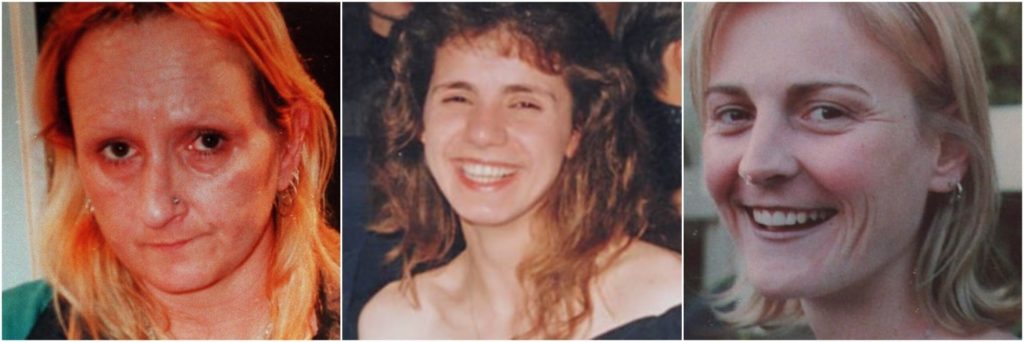In the darkish annals of Australian crime, few figures solid a greater sinister shadow than Peter Dupas. Currently serving three life sentences without parole for his heinous acts, Dupas isn’t always most effective as a convicted Australian serial killer but also a habitual perpetrator with a chilling criminal history spanning 3 more years. As we delve into the depths of his existence, we find a trail of violence, denial, and unspeakable acts towards ladies.
Peter Dupas: Early Life and Background:
Peter Norris Dupas, born on July 6, 1953, in Sydney, Australia, had an adolescence that belied the darkness that could unfold in his later years. Raised in Melbourne, Victoria, from a younger age, Dupas, the youngest of 3 siblings, experienced a seemingly ordinary upbringing. However, familial dynamics shifted as both siblings were substantially older, treating him as the simplest infant.
Completing his training at Grade 10, Dupas later received his Higher School Certificate, showcasing highbrow capabilities that contrasted sharply with the afflicted direction he became destined to take. The pivotal second in his early life took place in 1968 when, at the age of 15, he violently attacked a neighbor, foreshadowing a sample of stressful conduct.
Despite a short stint at Larundel Psychiatric Hospital, the foundation causes of Dupas’s violent tendencies remained in large part unexplored. His departure from formal training, coupled with this early encounter with the law, set the stage for a tumultuous journey marked by illegal activity, denial, and a descent into the depths of psychopathy.
Education and Early Signs of Trouble:
Peter Dupas’s departure from formal training after completing Grade 10 marked a pivotal second in his life, signaling a divergence from the conventional course. While the particular motives for leaving excessive faculty aren’t considerably documented, this choice laid the foundation for a chain of troubling occasions that would unfold within the years to come.
Despite leaving formal training early, Dupas later did his Higher School Certificate, revealing intellectual competencies that contrasted together with his increasing number of darker inclinations. The early signs and symptoms of the problem manifested in 1968 when, at the age of 15, he committed a violent attack on a neighbor, stabbing her in the face, neck, and hand. His incapacity to explain the purpose behind the attack and his next admission to Larundel Psychiatric Hospital hinted at a deep-seated mental disturbance.
These early signs of violence, coupled with a departure from the traditional educational trajectory, painted a troubling photo of Dupas’s trajectory. The loss of a comprehensive intervention throughout this vital duration set the level for a sample of criminal activity, denial, and escalating violence that would characterize his later life.
First Brush with the Law: 1968 Stabbing
In 1968, at the age of 15, Peter Dupas had his first stressful encounter with the regulation, marking a pivotal second that foreshadowed the darkness to return. Seeking to borrow a knife from his next-door neighbor underneath the pretense of peeling vegetables, Dupas released into a surprising and brutal attack. Stabbing the female inside the face, neck, and hand, the violence exhibited through this assault presented a glimpse right into disturbed thoughts.
Upon apprehension, Dupas shockingly confessed that he couldn’t assist himself and did not recognize why he had initiated the assault. This loss of regret and a seemingly random act of intense violence hinted at a deeply troubled psyche, setting the stage for a pattern of aggression that might unfold through the years.
Despite the severity of the crime, Dupas received 18 months of probation and a brief evaluation at Larundel Psychiatric Hospital. His release after just two weeks, treated as an outpatient, meditated an ignored opportunity for an in-depth examination of the psychological factors contributing to his violent disposition.
The 1968 stabbing served as a chilling precursor to the more sinister acts that might later define Peter’s criminal legacy. It underscored the pressing need for comprehensive intervention and psychological evaluation, elements that have been tragically lacking within the early ranges of his stumble upon the justice device.
1974 Imprisonment for a Violent Attack:
In 1974, the ominous trajectory of Peter Dupas’s criminal records reached a crucial juncture whilst he was sentenced to 9 years in prison, with a minimum period of 5 years. The charges stemmed from a horrific assault on a woman in her very own home, revealing the escalating severity of Dupas’s violent tendencies.
Breaking into the victim’s house, Dupas brandished a knife, threatening and tying her up before subjecting her to a brutal rape. The sentencing decision aptly described the crime as ‘one of the worst rapes that could be imagined,’ underlining the acute nature of Dupas’s actions.
During his imprisonment, Dupas’s behavior behind bars supplied further perception into the worrying depths of his psyche. Prison psychiatrist Dr. Allen Bartholomew mentioned Dupas’s constant denial of his criminal sports, figuring out serious psychosexual trouble and potential for hazard. This denial, Dr. Bartholomew emphasized, complicates any efforts at remedy and intervention.
The 1974 imprisonment marked a huge chapter in Dupas’s criminal adventure, revealing the profound demanding situations in addressing his deep-seated issues. The denial and psychosexual problems hinted at an unstable mix that might preserve to happen in increasingly heinous crimes against ladies.
The Denial and Potential Danger:
As Peter Dupas served his sentence following the 1974 imprisonment, a disturbing sample emerged, characterized by denial and an underlying ability for hazard. Prison psychiatrist Dr. Allen Bartholomew’s assessment discovered a troubling dynamic that would outline Dupas’s future interactions with the criminal justice machine.
Dupas’s consistent denial of his criminal activities has become an indicator of his psychological makeup. This wasn’t simply a refusal to just accept guilt; it was a coping mechanism, shielding him from acknowledging the gravity of his movements. Dr. Bartholomew recognized serious psychosexual trouble, suggesting that Dupas’s violent tendencies have been deeply rooted in a disturbed courting together with his sexuality.
More alarmingly, Dr. Bartholomew concluded that Dupas became to be visible as ‘potentially dangerous.’ This acknowledgment with the aid of a mental fitness expert highlighted the imminent chance posed by Dupas’s presence in society. The denial technique, coupled with the capacity danger, created a volatile mix that set the level for the following bankruptcy in his criminal odyssey.
Targeted Victims: Nicole Patterson:
Nicole Amanda Patterson, a 28-year-old psychotherapist, and young people counselor hired with the Ardoch Youth Foundation fell to the malevolence of Peter Dupas. Her aspirations of working a personal practice had been tragically cut short by the Australian serial killer.
Nicole’s desire to extend her patron base led her to location commercials in the Northcote Leader, and the use of her Northcote home as a workplace. Unbeknownst to her, this undertaking attracted the eye of Dupas, who preyed on susceptible women with calculated precision.
Dupas’s attack on Nicole opened up within the intended protection of her very own home. The info of the stumble has been chilling, with the psychotherapist becoming ensnared in a nightmarish ordeal. Nicole’s story displays the sinister pattern of Dupas’s crimes towards women, marked via a chilly and remorseless technique to inflict damage.
The tragedy of Nicole Patterson serves as a stark reminder of the vulnerability of individuals who sought to make an effective effect on the lives of others. Her existence became extinguished with the aid of a predator who exploited the very features that made her devoted to supporting stricken young people.
Margaret Maher: A Sex Worker’s Tragic Fate:
Margaret Josephine Maher, a 40-year-old intercourse employee within the Melbourne location, became another victim in Peter’s string of heinous crimes. Last visible alive at the Safeway grocery store in Broadmeadows on October four, 1997, Margaret’s destiny took a darkish flip, leading to a discovery that despatched shockwaves through the network.
Margaret’s frame becomes discovered hidden under a cardboard container containing computer parts, a grim scene that mirrors the stressful signature of Dupas’s crimes. A black woolen glove, observed close to her frame, contained DNA matching that of the serial killer, offering important proof linking him to this tragic event.
The nature of Margaret’s profession made her vulnerable to predators like Dupas, who preyed on ladies in positions of perceived weakness. The discovery of her frame and the incriminating proof intensified the urgency to apprehend Dupas, whose violent spree persisted to strengthen, leaving a trail of devastation in its wake. Margaret Maher’s tragic fate underscored the real-global effects of Dupas’s malevolence, leaving a community in mourning and amplifying the collective call for justice.
Mersina Halvagis: A Graveyard Tragedy:
On November 1, 1997, the serenity of Fawkner Cemetery in Melbourne was shattered by a horrifying act as 25-year-old Mersina Halvagis fell victim to Peter Dupas’s malevolence. Mersina was touring her grandmother’s grave when she became the target of a brutal assault, turning the sacred grounds into the scene of a heinous crime.
The alarm became raised whilst Mersina did not meet her fiancé as deliberate later that day. The violation of an area meant for solace and mirrored image, coupled with the targeting of a harmless young girl, dispatched shockwaves through the community.
Mersina’s tragic destiny epitomized the depths of Dupas’s depravity, choosing a graveyard—an area of mourning—as the backdrop for his ruthless assault. The investigation into her murder marked a turning factor, revealing the interconnectedness of Dupas’s crimes against girls and the urgency to understand him before greater lives were shattered.
The tragedy of Mersina Halvagis reverberated a long way beyond the confines of her immediate circle, shaking the collective feeling of protection in the community.
Other Suspected Murders:
Helen McMahon:
Helen McMahon’s life was tragically extinguished on a Rye seaside on February thirteen, 1985, in a chilling way that echoed the heinous patterns of Peter Dupas. A 47-year-old woman, Helen was determined to be overwhelmed to death while sunbathing topless. Her frame determined bare and covered via her beach towel, bore the hallmarks of a brutal attack.
The crime scene held a sinister connection to Dupas’s darkish history. Near the location of McMahon’s homicide, Dupas had earlier dedicated a rape on a seashore in Blairgowrie, ensuing in his conviction and imprisonment. Initially believed to be in prison at the time of McMahon’s homicide, investigators later discovered that Dupas was on pre-launch leave and residing within the Rye area. He was not released till two weeks after McMahon’s tragic loss of life.
While McMahon’s murder officially remains unsolved, police suspect that she might have been Dupas’s first sufferer. The haunting instances surrounding her loss of life underscore the urgency of unraveling the mysteries shrouding Dupas’s early criminal activities. McMahon’s tragic destiny serves as a pivotal piece in the elaborate puzzle of Peter Dupas’s malevolence, presenting a glimpse into the chilling pattern that could outline his reign of terror.
Renita Brunton:
The lifestyles of 31-year-old Renita Brunton came to an ugly give up on November 5, 1993, in the kitchen of her second-hand garb store at a mall in Sunbury, Victoria. The brutality of her murder, marked by way of 106 stab wounds, stunned investigators and left a community in mourning.
Peter emerged as a high suspect in the heinous crime that opened up inside the confines of Brunton’s keep. The sheer brutality of the attack meditated on a level of violence regular with Dupas’s modus operandi, sending investigators on a quest to resolve the dark truths surrounding the murder.
The stabbing of Renita Brunton introduced every other layer of complexity to the internet of suspicion surrounding Dupas. As investigators delved into the information of the crime, the haunting query of whether Brunton had fallen victim to the equal culprit answerable for other violent acts commenced to loom massive.
The unsolved nature of Renita Brunton’s homicide and the visceral brutality inflicted upon her underscores the challenges faced via regulation enforcement in linking the crime to Peter Dupas.
Kathleen Downes:
The somber halls of the Brunswick Lodge nursing home in Brunswick became the haunting backdrop for the murder of 95-year-old Kathleen Downes on December 31, 1997. In a chilling act of violence, Downes turned into stabbed to death at 6:30 a.m., casting a pall over the close of the year and marking any other suspected crime linked to Peter Dupas.
Dupas’s shadow loomed massive over Downes’s murder, with police investigations revealing a worrying connection. Before the fatal attack, Dupas had made a telephone name to the nursing domestic, elevating unsettling questions about premeditation and intent.
The timing of Downes’s homicide, just one month after Mersina Halvagis’s tragic stop, intensified the scrutiny on Dupas as a suspect in a developing list of heinous crimes against prone ladies. The elderly, living inside the intended safety of a nursing domestic, have become unwitting targets of a killer whose reasons and techniques persevered to baffle investigators.
The long road to justice saw Dupas charged with Downes’s murder in February 2018, underscoring the patience of law enforcement in unraveling the mysteries surrounding the suspected victims of this infamous serial killer.
Prison Life and Unlikely Romance:
Within the confines of Melbourne’s Pentridge Prison, Peter Dupas’s lifestyle took a sudden turn—a turn that would add a layer of complexity to his already enigmatic personality. Despite his records of violence and the ominous shadow of his crimes, Dupas shaped an incredible connection with Grace McConnell, an intellectual fitness nurse stationed in the prison.
Their dating, marked through a good-sized age distinction of 16 years, blossomed inside the stark surroundings of the jail partitions. Dupas and McConnell’s bond transcended traditional expectancies, culminating in a stunning union. In 1987, interior Castlemaine Gaol, the unlikely couple exchanged vows, marrying in the restrictive confines of the prison device.
The dynamics of this prison romance increase intriguing questions on the complexities of human connections in the maximum not likely of instances. What drew McConnell to a person with this type of darkish and violent history? Was it a genuine notion in rehabilitation, an try to apprehend the intricacies of Dupas’s troubled mind, or a manifestation of manipulation on Dupas’s part? This not-going romance inside the jail device demands societal perceptions of justice and redemption.
Conclusion:
In conclusion, the lifestyle of Peter Dupas is a chilling chronicle of violence, denial, and the devastating impact he inflicted upon his sufferers. From his early years marked with the aid of stressful encounters with the regulation to the heinous murders of ladies including Nicole Patterson and Margaret Maher, Dupas’s crime legacy is certainly one of profound darkness. The sample of denial and the capacity risk he posed, as highlighted by jail psychiatrist Dr. Allen Bartholomew, underscore the challenges in addressing individuals with deep-seated psychosexual troubles. The unresolved cases of suspected sufferers, which include Helen McMahon, Renita Brunton, and Kathleen Downes, serve as haunting reminders of the continuing quest for justice.
Dupas’s not-like romance with Grace McConnell in the prison walls provides an enigmatic layer to his complicated persona. As the investigations maintain, the need for closure for the victim’s households and the network stays paramount in unraveling the total extent of Peter Dupas’s malevolence.
FAQs:
Q1: Who is Peter Dupas?
A1: Peter Dupas is an Australian convicted serial killer born on July 6, 1953. Currently serving 3 life sentences without parole, he has an extensive criminal history of violent offenses spanning more than 3 many years.
Q2: What crimes are Peter Dupas convicted of?
A2: As of 2007, Dupas has been convicted of 3 murders and is a prime suspect in at least 3 different murders committed in the Melbourne vicinity for the duration of the 1980s and 1990s. His crime signature entails the elimination of the breasts of his female victims.
Q3: What have been the early symptoms of trouble in Peter Dupas’s lifestyle?
A3: Dupas left high college after Grade 10 and exhibited symptoms of trouble early on. His first vast come across the law occurred at the age of 15 when he violently attacked a neighbor, stabbing her in the face, neck, and hand.
Q4: What changed into Dupas’s jail life like?
A4: While imprisoned at Melbourne’s Pentridge Prison, Dupas formed an uncommon courting with intellectual health nurse Grace McConnell, 16 years his senior. The two married in 1987 internal Castlemaine Gaol, dropping mild on the complexities of Dupas’s private existence.
Q5: How did Dupas pick out his sufferers?
A5: Dupas focused on prone girls, which includes psychotherapist Nicole Patterson and sex employee Margaret Maher. His preference for sufferers regularly concerned the ones in positions of perceived weak points, allowing him to make the most of their vulnerabilities.
READ MORE: The Tragic Story of Jessica Keen: The Mystery Behind a Young Life Cut Short








